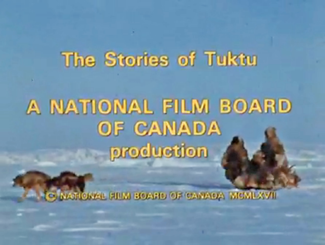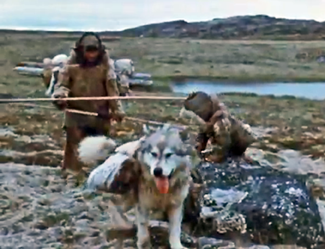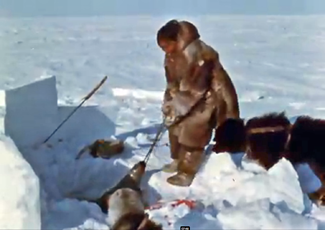From the Editor... Turning Dreams into Reality
In the News
Return of the Far Fur Country Project Update
Another Inuktitut Word for Snow
A Condo for Dogs: The Evolution of Our Dog Houses
Antiquity of the Inuit Sled Dog Supported by Recent Ancient DNA Studies
A Different Type of Sledding
Astrup’s Harness: A personal voyage to understand an old sealskin sled dog harness, Part 2
Movie Review: The Stories of Tuktu: Tuktu and His Eskimo Dogs
IMHO.... Why do we do this?
Navigating This Site
Index of articles by subject
Index of back issues by volume number
Search The Fan Hitch
Articles to download and print
Ordering Ken MacRury's Thesis
Our comprehensive list of resources
Defining the Inuit Dog
Talk to The Fan Hitch
The Fan Hitch home page
Editor: Sue Hamilton
Webmaster: Mark Hamilton
The Fan Hitch,
Journal of the Inuit Sled Dog, is
published four times a
year. It is available at no cost online
at: https://thefanhitch.org.
The Fan Hitch welcomes your letters, stories, comments and suggestions. The editorial staff reserves the right to edit submissions used for publication.
Contents of The Fan Hitch are protected by international copyright laws. No photo, drawing or text may be reproduced in any form without written consent. Webmasters please note: written consent is necessary before linking this site to yours! Please forward requests to Sue Hamilton, 55 Town Line Rd., Harwinton, Connecticut 06791, USA or mail@thefanhitch.org.
This site is dedicated to the Inuit Dog as well as related Inuit culture and traditions. It is also home to The Fan Hitch, Journal of the Inuit Sled Dog.
The Fan Hitch welcomes your letters, stories, comments and suggestions. The editorial staff reserves the right to edit submissions used for publication.
Contents of The Fan Hitch are protected by international copyright laws. No photo, drawing or text may be reproduced in any form without written consent. Webmasters please note: written consent is necessary before linking this site to yours! Please forward requests to Sue Hamilton, 55 Town Line Rd., Harwinton, Connecticut 06791, USA or mail@thefanhitch.org.
This site is dedicated to the Inuit Dog as well as related Inuit culture and traditions. It is also home to The Fan Hitch, Journal of the Inuit Sled Dog.

Screen
grab courtesy of NFB
The Stories of Tuktu: Tuktu and His Eskimo Dogs reviewed by Sue Hamilton |
Aware that a millennias-old lifestyle was soon to end, anthropologists, ethnographers and a few photographer/filmmakers (some of whom had lived and travelled with nomadic Inuit) recorded this disappearing way of life of Netsilingmiut and Inuit of other arctic Canadian regions. Much of the filming was done in conjunction with the National Film Board of Canada (NFB), who has an impressive anthology of archival documentary films. One of the NFB’s collections is called In Celebration of Nunavut – Stories of Tuktu, thirteen short films (about fourteen minutes each), created in 1967 and 1968 about a fictional Netsilik Elder, Tuktu, who narrates his childhood recollections of living a nomadic lifestyle. The titles in the series are: Tuktu and the magic bow, Tuktu and the magic spear, Tuktu and the snow palace, Tuktu and the big seal, Tuktu and the indoor games, Tuktu and the big kayak, Tuktu and the trials of strength, Tuktu and his Eskimo dogs, Tuktu and the clever hands, Tuktu and his nice new clothes, Tuktu and the caribou hunt, Tuktu and the ten thousand fishes, Tuktu and his animal friends. A portion of this collection has been made part of NFB’s much celebrated Unikkausivut, Sharing our Stories.

Screen
grab courtesy of NFB
|
Although some of the action may have been performed for the camera, what you see is truly authentic and represents the last vestiges of a soon-to-disappear way of life. These scenes carry Tuktu and his Eskimo Dogs and that is important to keep in mind because the dialog lacks authenticity (apparently not created from any Inuktitut translation, or at least not a very good one) and is clearly non-Inuit in origin nor is the narrator or the way he speaks. The same can to be said for the lack of relevance of the musical accompaniment. In creating the Unikkausivut series, NFB was aware that many of their films were originally made by and bore the unmistakable characteristics of a non-indigenous culture. In a September 2011 The Fan Hitch interview, Assistant Commissioner of the National Film Board of Canada, Claude Joli-Coeur, explained, “That is a part of the richness of our collection, to see the evolution of how Inuit culture was represented. We have films that were originally made by white people, with a European approach. And later, we see white people who have transformed themselves through the cause of the Inuit, becoming almost Inuit themselves. We are now making films with Inuit creators. And we have selected the films to give you that historical perspective.” So it is important to wade past much of what is audibly described and focus on the visual evidence.

Screen
grab courtesy of NFB
|